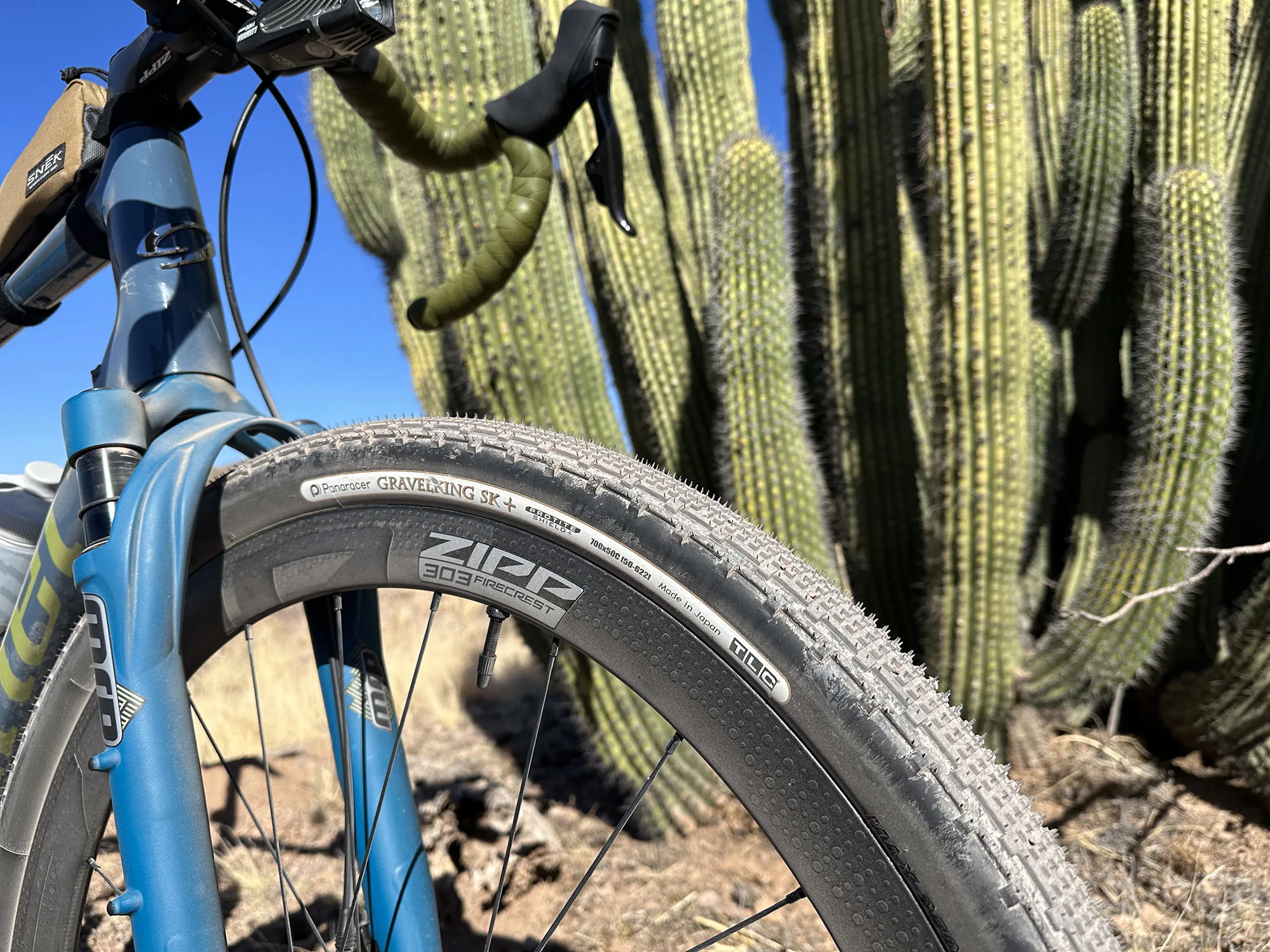While prepping our bikes for a few days of unknown adventures in the desert, with the potential for fully loaded bikepacking, I knew the tires needed to be up for anything.
But I didn’t want anything too heavy, or too knobby, because I knew we’d have a lot of smooth gravel miles to cover. Those constraints (opportunities?) led me to the Panaracer Gravelking SK+, a tire that checked all the boxes and then some. Details below, but here are 5 reasons I’d recommend it for any adventure:
- Lots of size options
- Super tough puncture layer
- Fast rolling yet grippy
- Fits hooked & hookless rims
- Reasonable prices
Gravelking Specs & Actual Weights
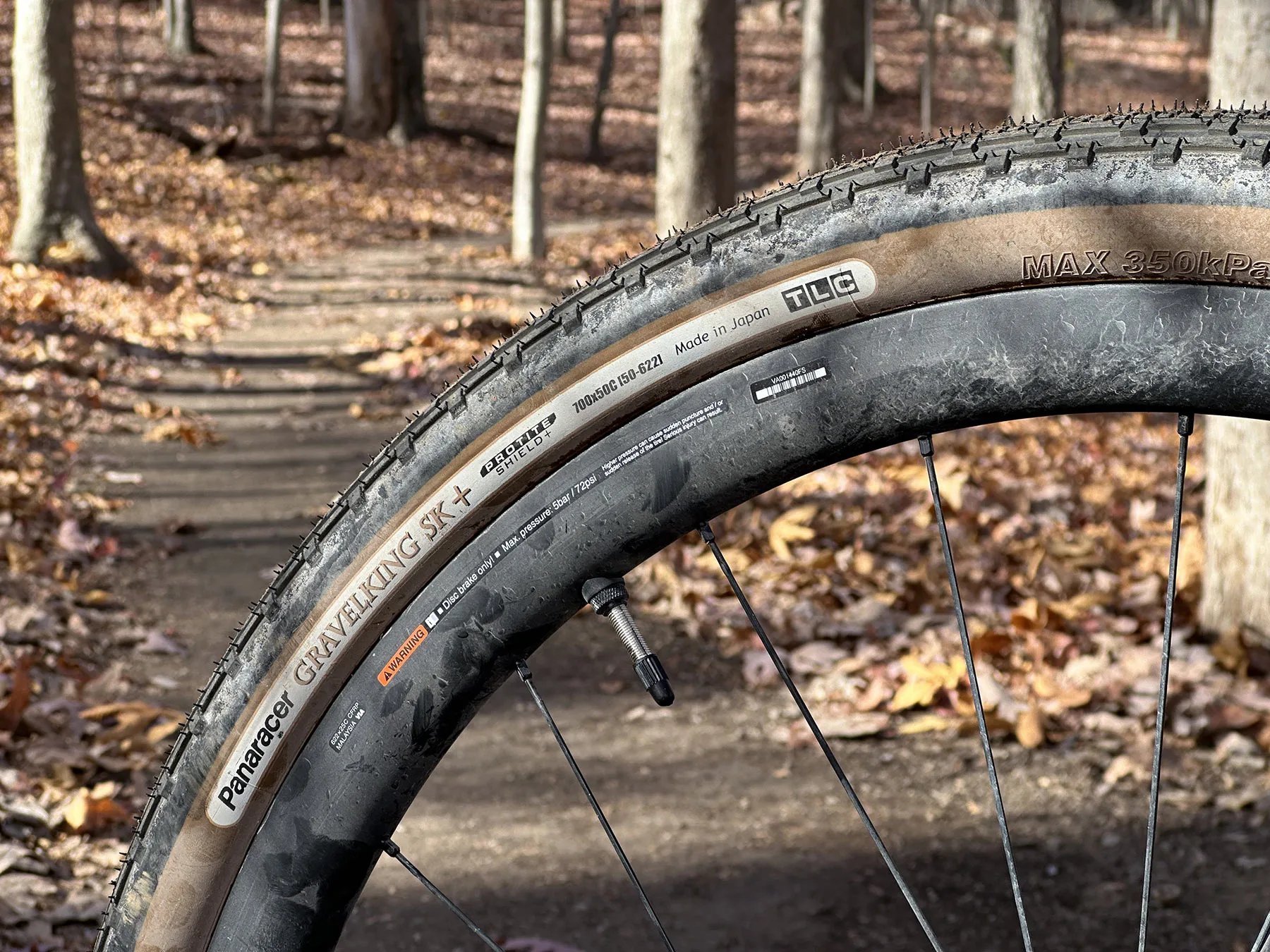
First, here’s what you need to know about Panaracer’s tire nomenclature. All of their gravel tires are the Gravelking, and there are five tread options:
- Slick – micro dots and sipes, basically a slick with some texture
- SS – semi-slick with mild dots leading to three rows of cornering ridges
- SK – semi-knob (tested) with square center knobs and pronounced cornering ridges
- X1 – tightly-packed center knob section with transition & cornering knobs
- EXT – basically an MTB tread with widely spaced transition & cornering knobs for mud clearance
The Slick, SS, SK, and X1 are all designed to roll very fast and smooth, just pick the one that matches your terrain. They say the X1 is the fastest rolling and covers the widest terrain range, but I like the SK’s smaller center section, and word on the street is it’s more aerodynamic. Weights are comparable, and the SK comes in more sizes (for now…).
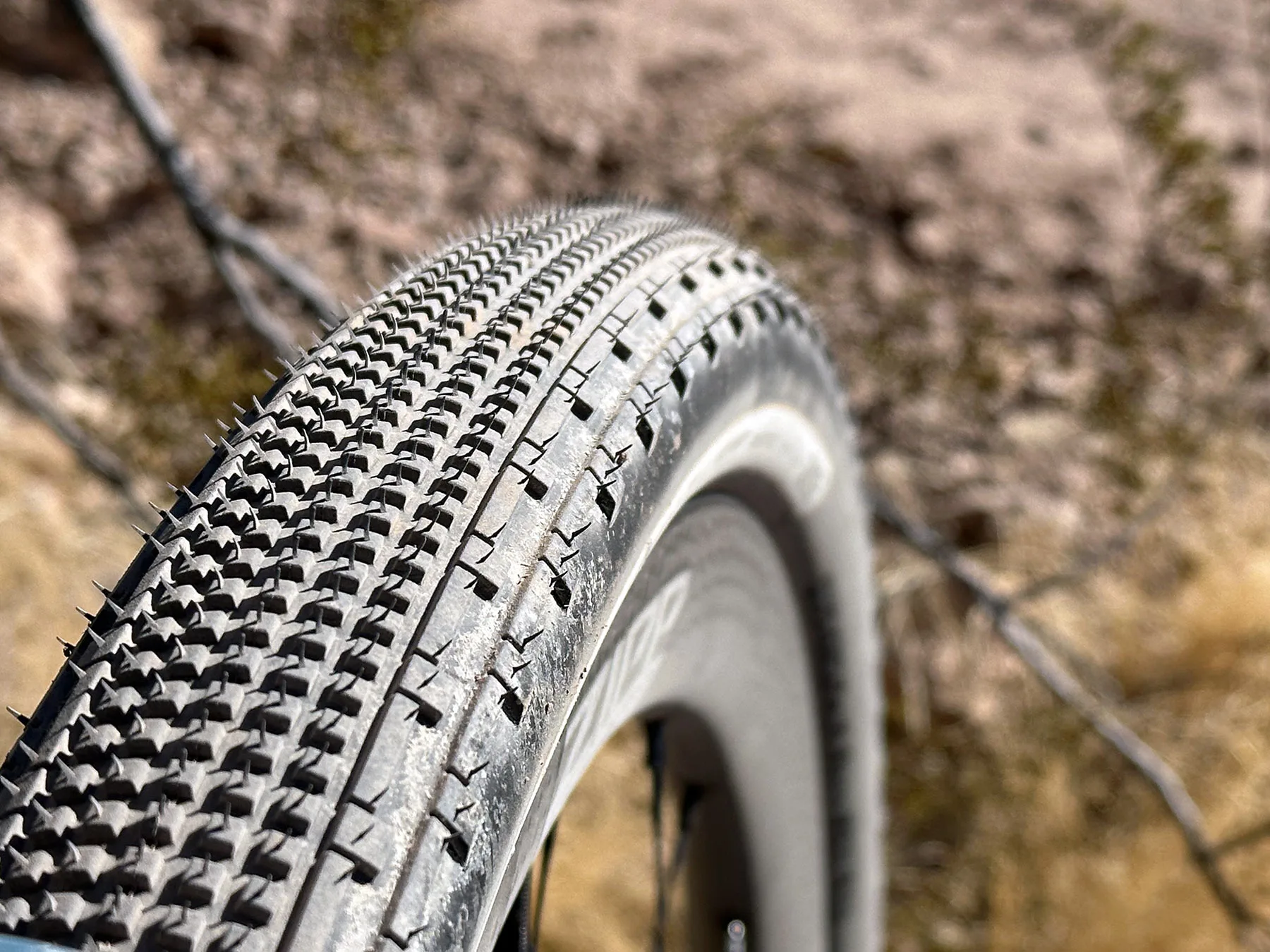
I also think the small blocked center tread section has more grip on the typical dust-and-scree-over-hardpack surfaces typically found in the desert. And I just like their looks better. Fashion choice FTW.
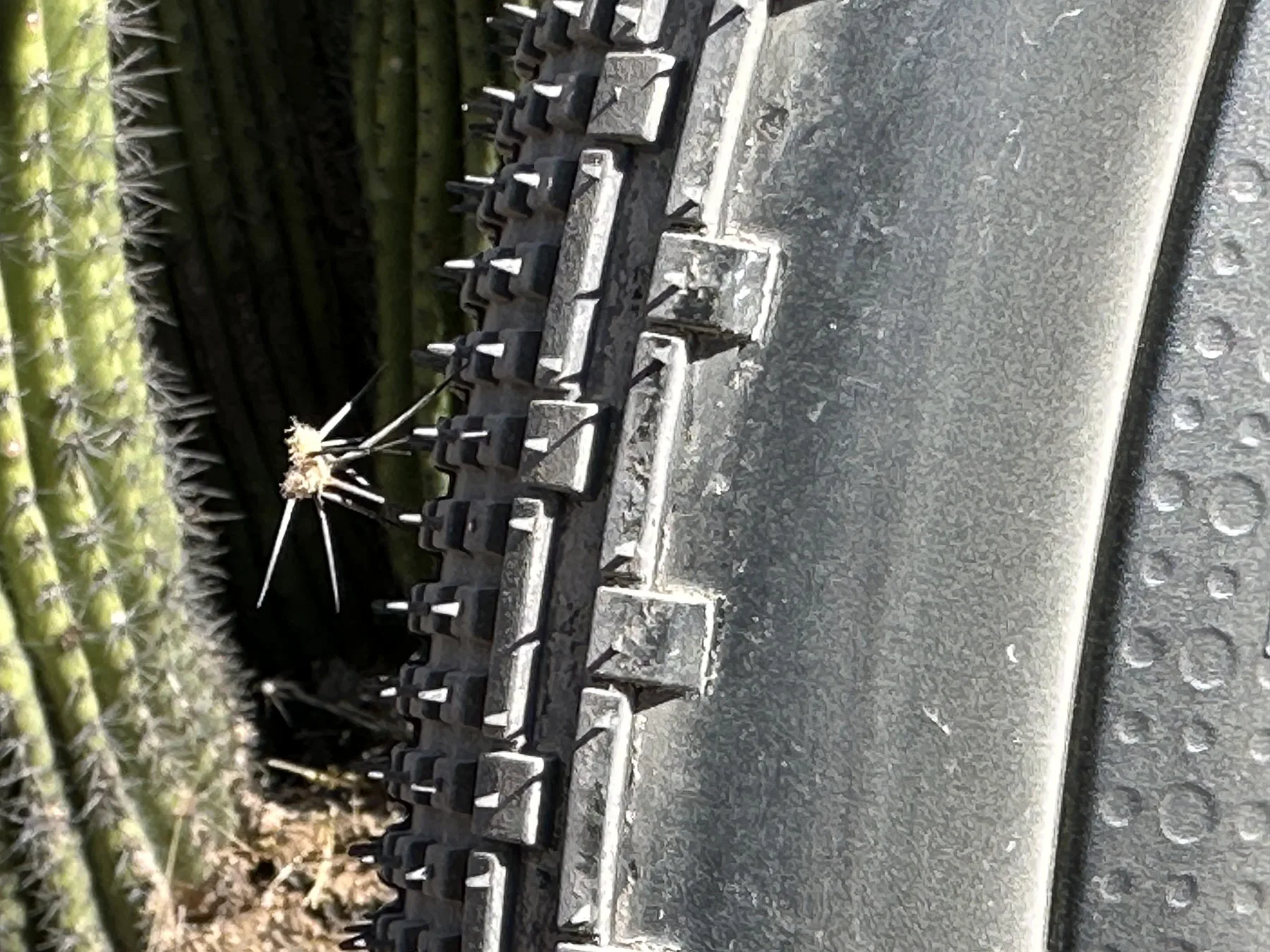
The “+” means you get an extra layer of protection. Their standard tires have a single bead-to-bead puncture using TuffTex. The “+” versions have a second bead-to-bead layer, which is new since March 2024.
TuffTex is the evolution of Protite (which is what my tires have, I started testing them in fall 2023). TuffTex is a similar material, but a new manufacturing and application process makes it more supple. Protite had one bead-to-bead layer with a second layer only under the tread cap, so the TuffTex versions also have better overall protection, too.
If you buy new tires now, TuffTex is what you’ll get, and that’s a good thing.
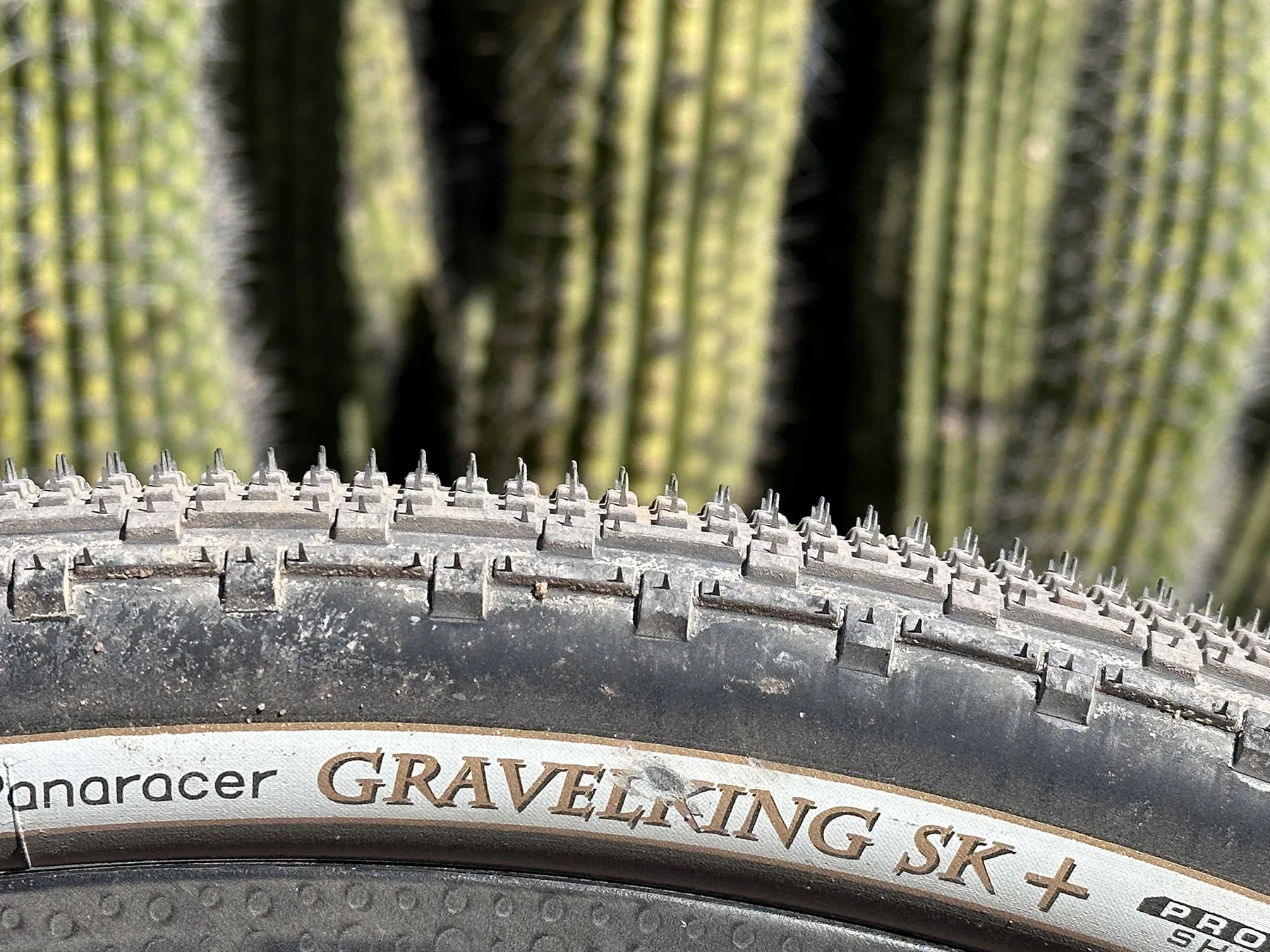
The other upgrades since the March 2024 Gravelking reboot include:
ZSG Tread Compound
Zero Slip Grip compound has better, more consistent grip from freezing to too-hot-to-ride temps. And they say it’s just as durable. So, the tires will grip great no matter what time of year you’re riding.
Beadlock
Redsigned bead designed to fit better on any tubeless-read rim design (hooked or hookless), and often seat with only a floor pump.
My test tires have been great, and the new ones available now claim to be better in every way.
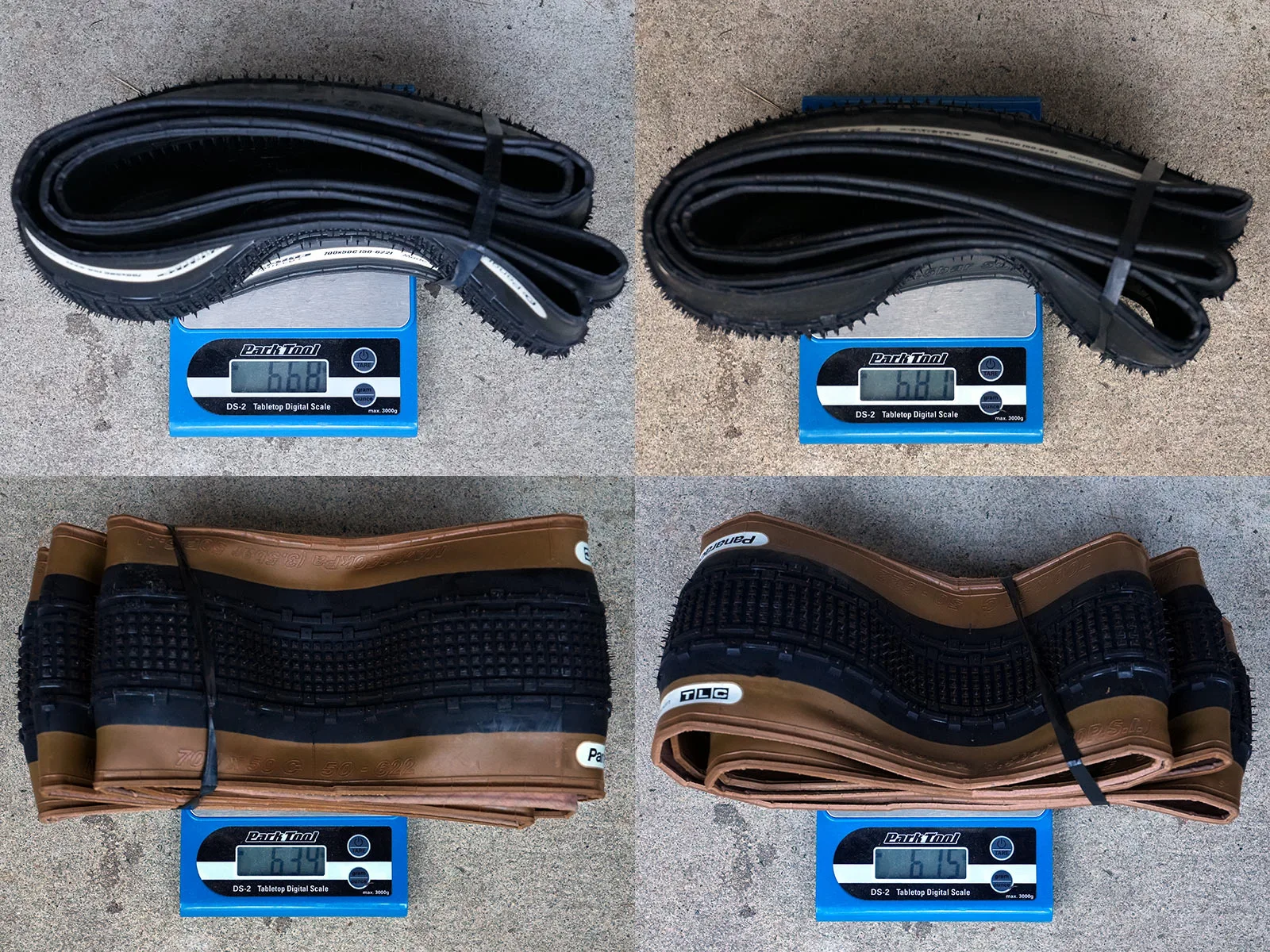
We tested both standard and brown wall tires, which are functionally the same, but the extra rubber on the black ones does add weight.
Panaracer doesn’t publish all of the weights for all of their tires, so I can’t compare to spec, but mine came in at:
- 668g
- 681g
- 634g
- 615g
If brown looks good on your bike, I’d go with that unless you want that extra rubber for… wait for it… protection.
Gravelking SK+ Ride Review
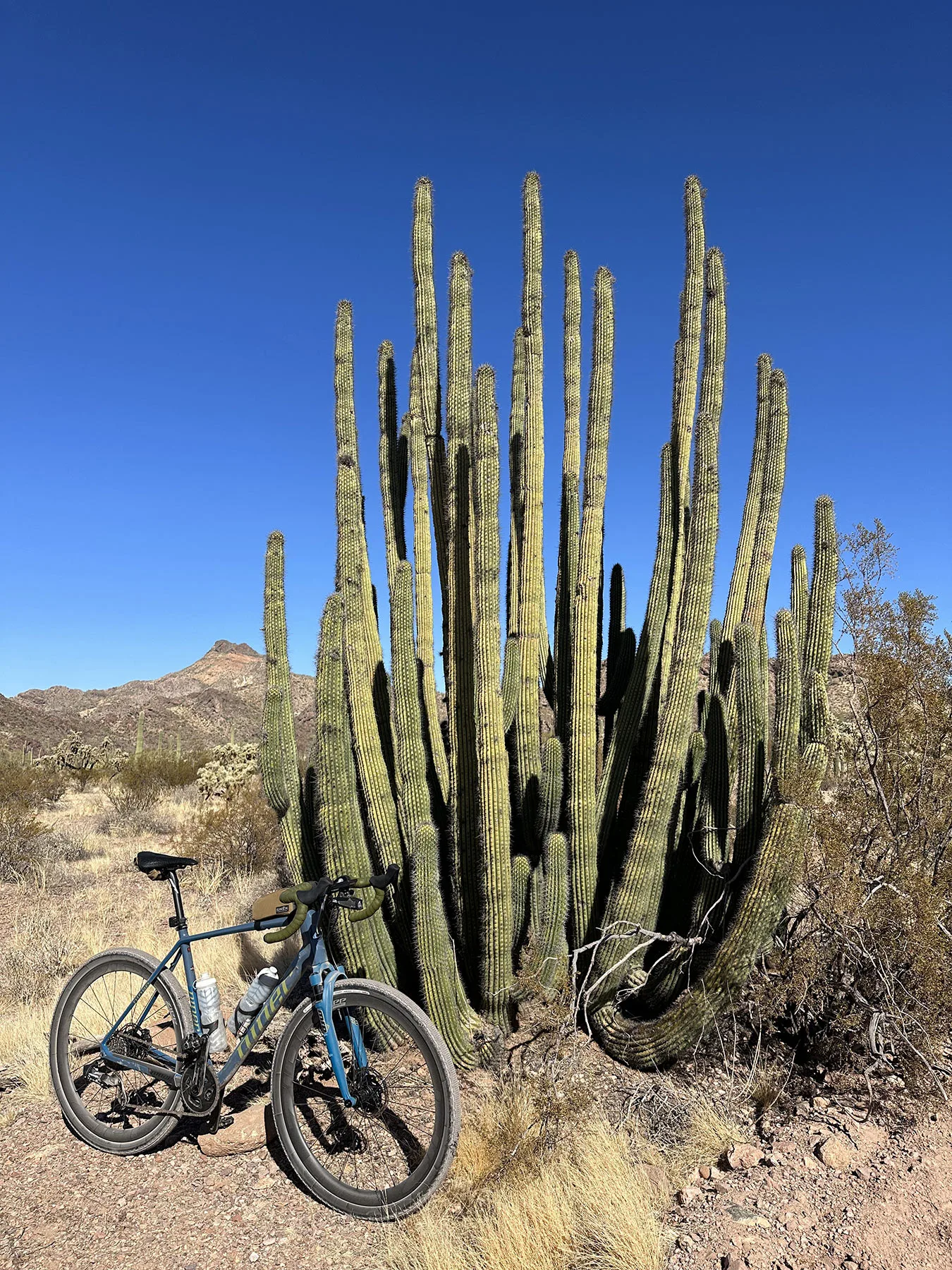
We ended up doing day rides and car camping rather than loaded bikepacking, so there’s no loaded touring test to speak of.
However, we did use the opportunity of lighter, unburdened bikes to ride through chunkier sections just to test them out:
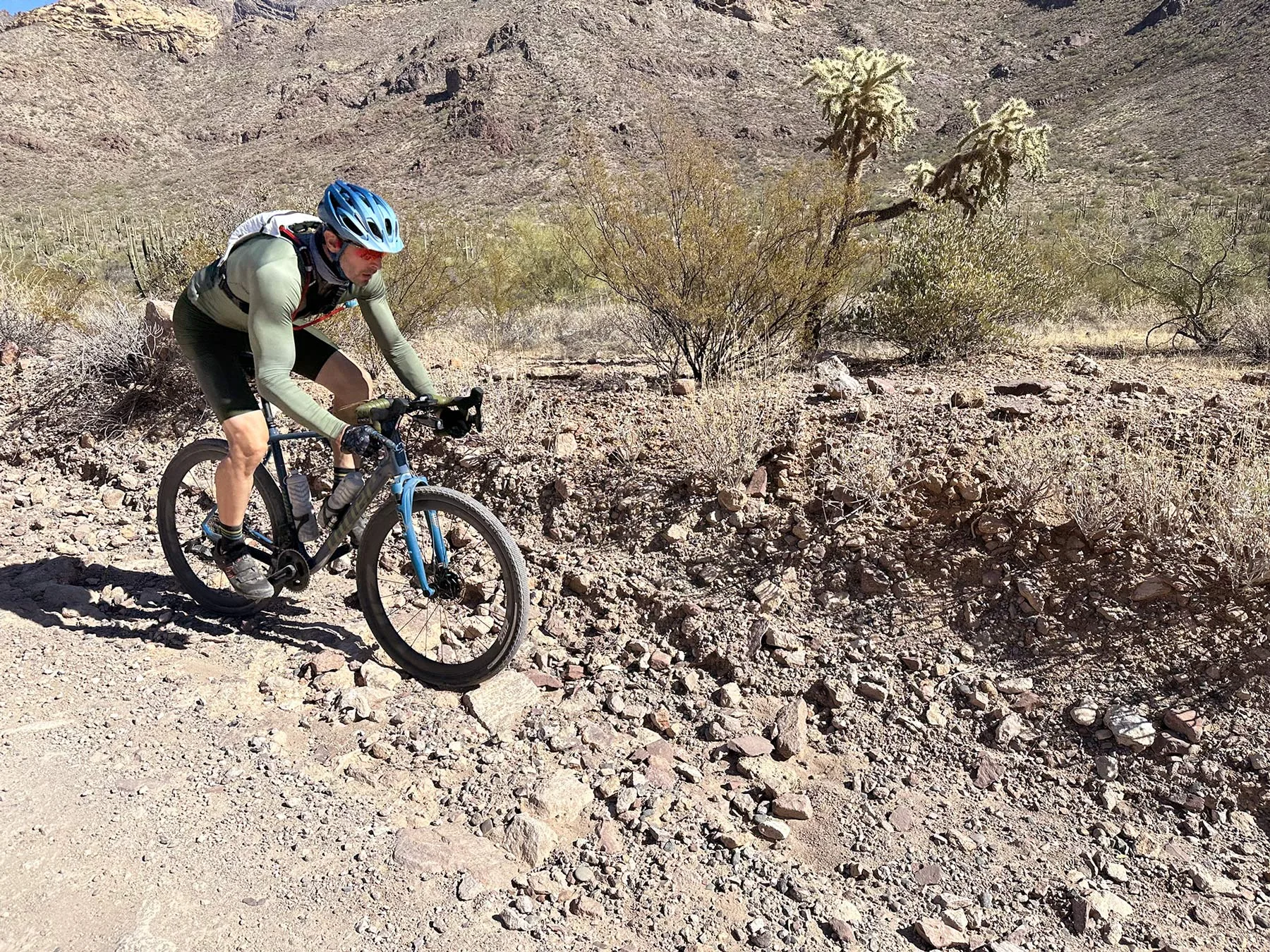
With the extra volume a 50mm tire offers, we ran fairly low pressures to smooth things out. The extra protection, especially with the new TuffTex models, gives the sidewalls plenty of support at lower pressure, too. We didn’t notice any squirming.
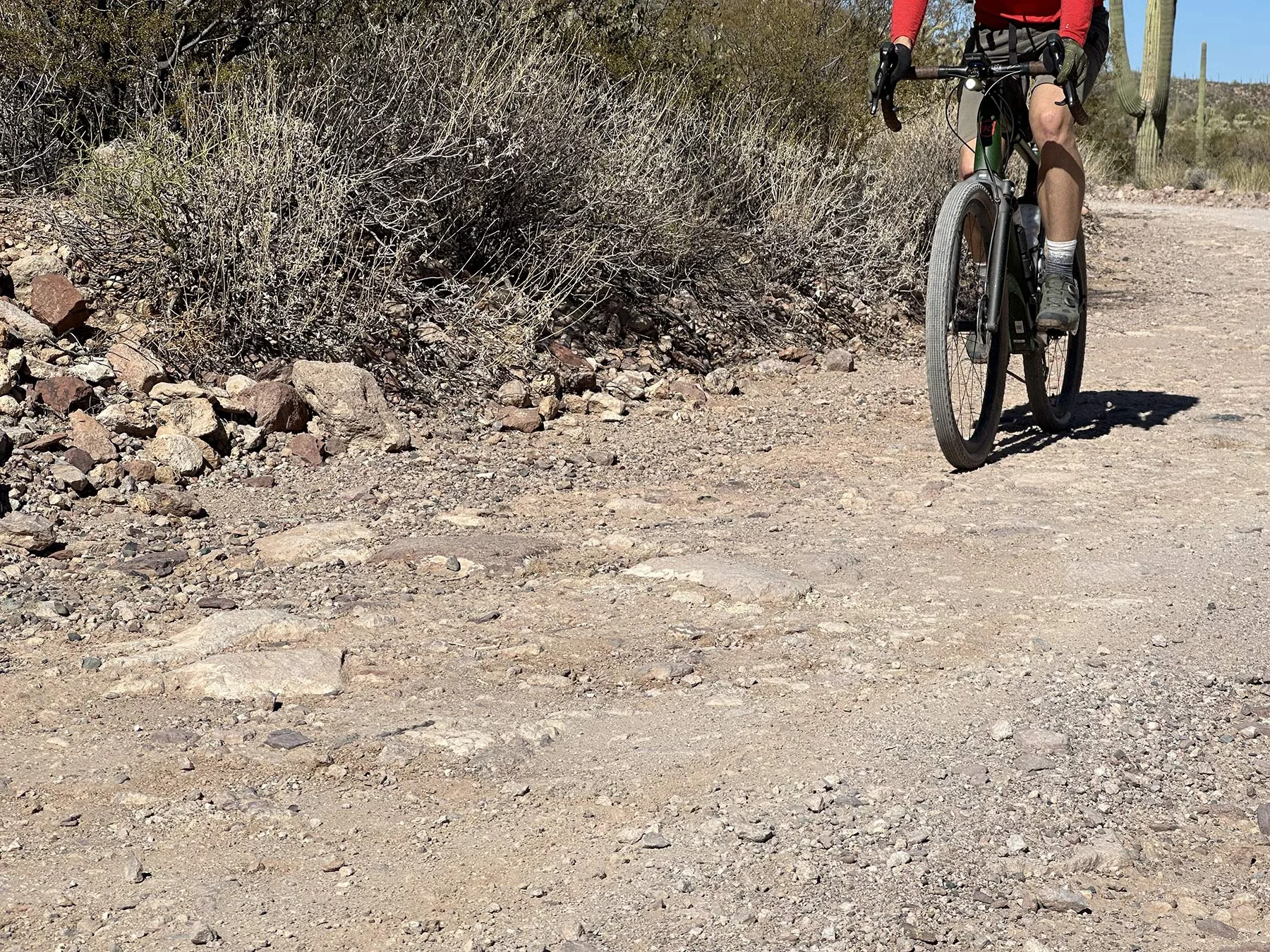
And on mundane sections with the usual weathered surface chatter, they’re sublime.
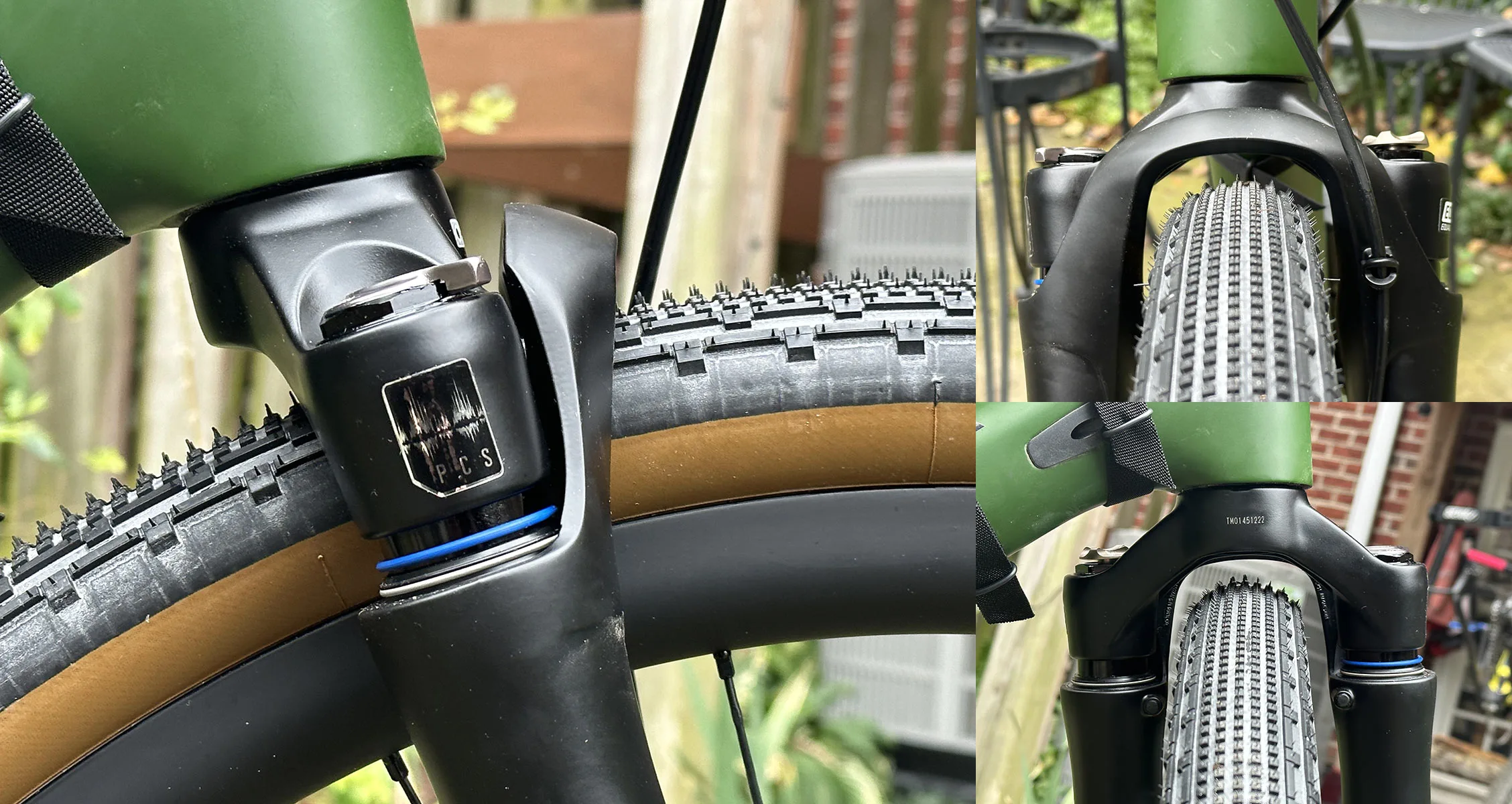
I have a few caveats for this size and this tire in particular, though:
They pack up in wet clay.
The tight tread blocks help them roll fast, but they don’t let go of thick southeastern mud very well. If you routinely ride in thick or sticky mud, the X1 might be the better choice.
50mm is big
While they cleared the Niner RLT RDO just fine, we noticed a little frame rub on the Kona Libre DL. Actually, we didn’t really notice it while riding, but there’s a bit of wear on the paint inside the chainstays, which could have come from stuff stuck to the tire or occasional rubbing during hard cornering. Regardless, make sure you have at least 6mm clearance on both sides of the tire just to be safe.
It’s not just the tire width, it’s also the height. Wider tires are also taller, so make sure it’ll clear your fork’s crown under full compression if running a suspension fork. I’d recommend at least 1cm of clearance here.
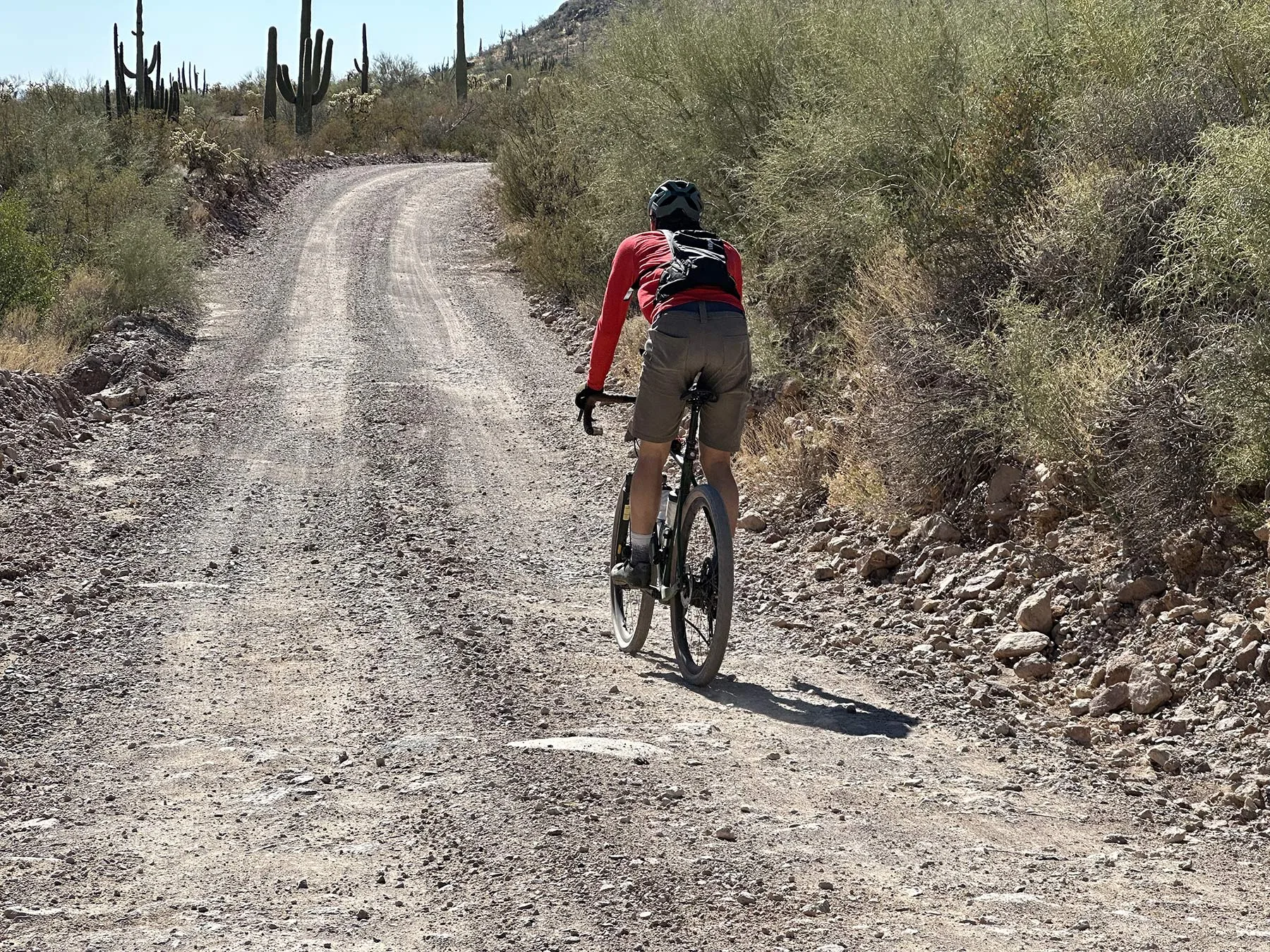
There’s a reason Gravelkings are so popular. I’m still running mine on the Niner and have been very happy with them on a range of surface types. They also hold air well, and the tread’s holding up well, too.
It’s always a challenge doing long-term reviews, because a lot of brands introduce new versions annually. Panaracer certainly has a longer lifecycle than this, which is good, we just happened to fall into a rare update schedule for them. Regardless, I’d recommend this tire as a general purpose adventure tire – trustworthy for getting into the wild without giving up ride quality and performance.
